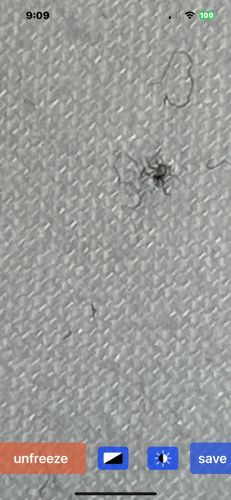Dust Mite
Scientific Name: Dermatophagoides spp. (several species)
Order & Family: Order: Acariformes, Family: Pyroglyphidae
Size: 0.2-0.3 mm (microscopic)

Natural Habitat
Human dwellings, especially bedding, upholstered furniture, carpets, and clothing, where they feed on shed human skin cells. They thrive in warm, humid environments.
Diet & Feeding
Dead human and animal skin flakes (dander). They do not bite or live on people or pets.
Behavior Patterns
Dust mites are microscopic and not visible to the naked eye. They are most active at night when humans are in bed. They do not drink water but absorb moisture from the air.
Risks & Benefits
Risks: Their fecal pellets and body fragments are a major source of allergens that can trigger asthma, eczema, and allergic rhinitis in sensitive individuals. Benefits: They play a role in breaking down organic matter in indoor environments, though this benefit is often overshadowed by their allergenic impact.
Identified on: 9/17/2025